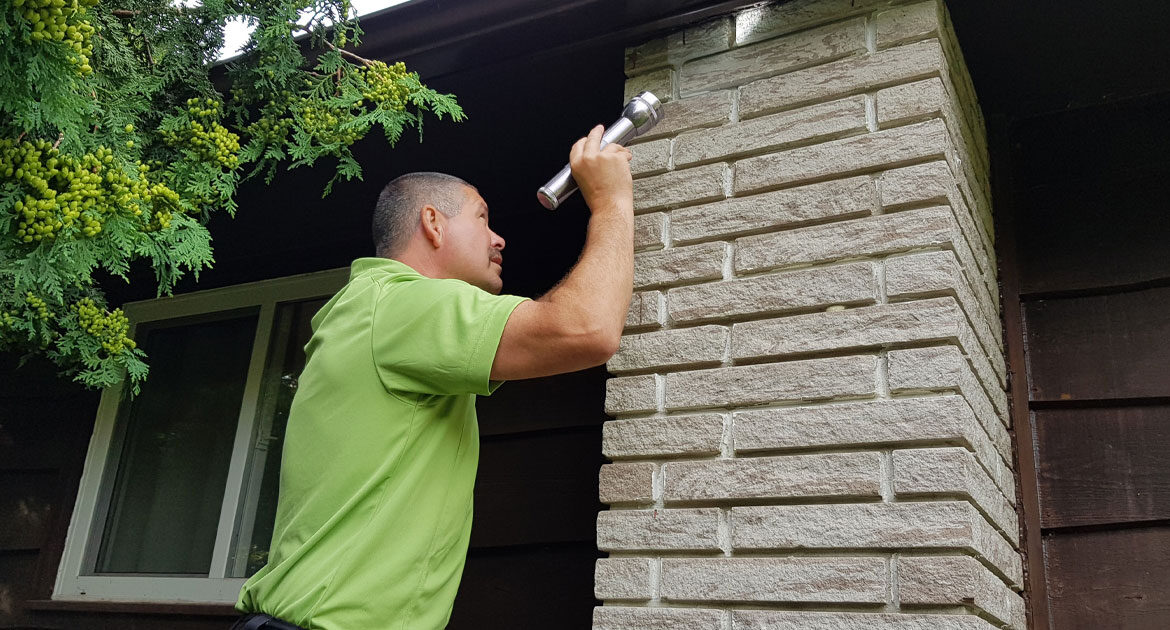Brick structures are typically very sturdy, so much so that they often symbolize strength. Nevertheless, you shouldn’t assume that just because you live in a brick home, you are safe from the possibility of any encroaching wildlife. Brick houses have vulnerabilities that animals, particularly mice, can exploit.
What Are Weep Holes, and How Do Mice Use Them?
Have you ever noticed small gaps between the bricks in the wall near your home’s foundation? They may look like a structural flaw to you. They are actually called weep holes, and they are supposed to be there.
Brick and mortar may be strong building materials but they are still susceptible to water damage. Moisture trapped behind a wall could promote mould growth and undermine the overall structural integrity. Weep holes allow moisture to exit from behind the brick wall. They also allow air to circulate to help the water to evaporate rather than stagnate behind your wall.
Weep holes typically aren’t very wide; they’re typically more of a slot or a gap. Bricklayers typically form weep holes by neglecting to put wet mortar between two bricks. Nevertheless, though the openings are small, they may still be wide enough to allow mice in. If you measure your weep holes and find that they are at least the width of a dime, they are wide enough for mice to fit through.
What Other Ways Can Mice Get Into Your Brick Home?
There are other vulnerabilities that may give mice access to your home, and unlike weep holes, not all of them were intended by the builders. For example, if your home is made of irregularly shaped bricks or stone, there may be a gap between the exterior wall and the soffit of the roof. Remember, it doesn’t have to be a big gap for mice to take advantage of it. Gaps can also form between foundation and siding. If you have an older home with a fieldstone foundation, the mortar between the stones can break down over time and form gaps that mice can fit through. If you have a window frame at ground level, it may rot and form a gap that the mouse can fit through, and if you don’t bend down to look at it, you might not notice it.
What Is Involved in the Mouse Exclusion Process?
Exclusion is the process of preventing animals from getting back into your home following mice removal. Our technicians are trained to perform effective removal to prevent future infestations of mice. In the case of gaps or cracks that have formed as a result of degradation, the exclusion is a relatively simple matter of closing up the openings so the mice can no longer use them.
In the case of openings that are supposed to be there, such as weep holes, exclusion can be a little more tricky. We can’t close off the weep holes or they won’t be able to do what they are supposed to do, and you may end up with bigger problems. Instead, we determine solutions that allow the weep holes to work the way they are supposed to while preventing the mice from getting in. This involves installing some sort of mesh or cover over the weep holes that allow water to flow out but is resistant to chewing by mice.
Call Skedaddle Right Away for Wildlife Control in Markham
When animals such as mice get into your home, they can cause structural damage to your property and expose you to diseases. Mice are especially concerning because they are small and can multiply quickly. Therefore, you should call for mice removal from Skedaddle right away to prevent the problem from becoming even bigger.




